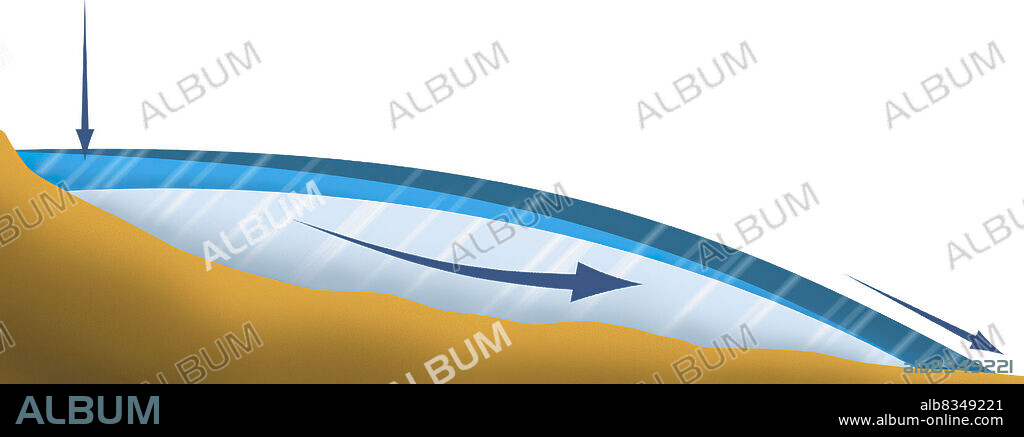alb8349221
All glaciers are composed of two successive zones: the zone of accumulation, at the top of the glacier, and the zone of ablation, at the bottom. The equilibrium line, which separates the two zones, is clearly visible at the end of summer, when the top of the glacier is covered with fresh white snow while its bottom part is composed of ice and darker, old snow. In the Alps, this line is at 3,000 m altitude, but it is much higher in the Himalayas and the Andes. The glacier is in mass balance when gains of new snow in the zone of accumulation compensate for losses in the zone of ablation. When this balance is upset, the glacier retreats or advances.

|
Añadir a otro lightbox |
|
Añadir a otro lightbox |



¿Ya tienes cuenta? Iniciar sesión
¿No tienes cuenta? Regístrate
Compra esta imagen.
Selecciona el uso:

Descripción:
Ver traducción automática
All glaciers are composed of two successive zones: the zone of accumulation, at the top of the glacier, and the zone of ablation, at the bottom. The equilibrium line, which separates the two zones, is clearly visible at the end of summer, when the top of the glacier is covered with fresh white snow while its bottom part is composed of ice and darker, old snow. In the Alps, this line is at 3,000 m altitude, but it is much higher in the Himalayas and the Andes. The glacier is in mass balance when gains of new snow in the zone of accumulation compensate for losses in the zone of ablation. When this balance is upset, the glacier retreats or advances.
Crédito:
Album / Universal Images Group
Autorizaciones:
Modelo: No - Propiedad: No
¿Preguntas relacionadas con los derechos?
¿Preguntas relacionadas con los derechos?
Tamaño imagen:
4143 x 1553 px | 18.4 MB
Tamaño impresión:
35.1 x 13.1 cm | 13.8 x 5.2 in (300 dpi)
Palabras clave:
 Pinterest
Pinterest Twitter
Twitter Facebook
Facebook Copiar enlace
Copiar enlace Email
Email
